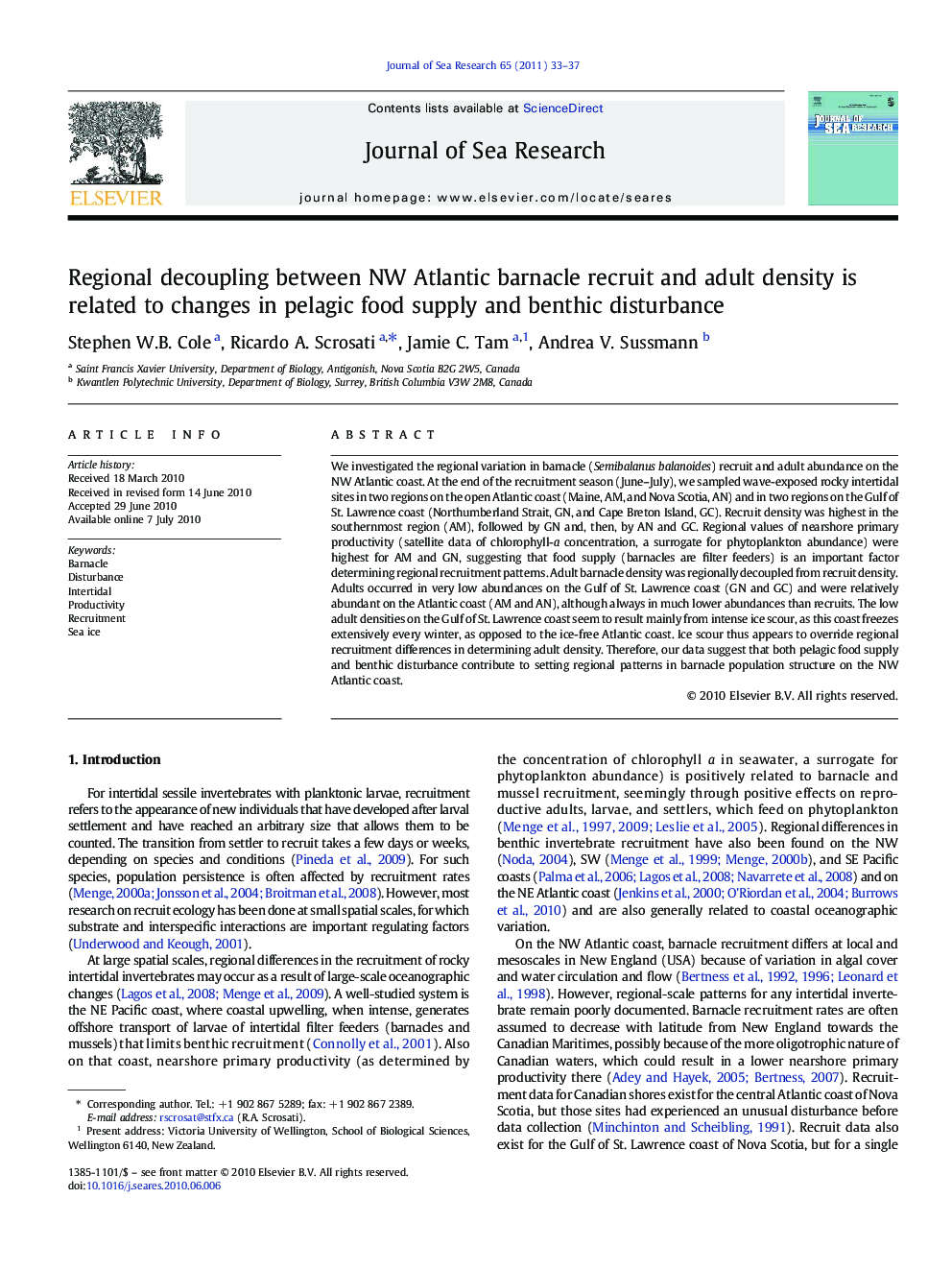| Article ID | Journal | Published Year | Pages | File Type |
|---|---|---|---|---|
| 4550047 | Journal of Sea Research | 2011 | 5 Pages |
Abstract
We investigated the regional variation in barnacle (Semibalanus balanoides) recruit and adult abundance on the NW Atlantic coast. At the end of the recruitment season (June-July), we sampled wave-exposed rocky intertidal sites in two regions on the open Atlantic coast (Maine, AM, and Nova Scotia, AN) and in two regions on the Gulf of St. Lawrence coast (Northumberland Strait, GN, and Cape Breton Island, GC). Recruit density was highest in the southernmost region (AM), followed by GN and, then, by AN and GC. Regional values of nearshore primary productivity (satellite data of chlorophyll-a concentration, a surrogate for phytoplankton abundance) were highest for AM and GN, suggesting that food supply (barnacles are filter feeders) is an important factor determining regional recruitment patterns. Adult barnacle density was regionally decoupled from recruit density. Adults occurred in very low abundances on the Gulf of St. Lawrence coast (GN and GC) and were relatively abundant on the Atlantic coast (AM and AN), although always in much lower abundances than recruits. The low adult densities on the Gulf of St. Lawrence coast seem to result mainly from intense ice scour, as this coast freezes extensively every winter, as opposed to the ice-free Atlantic coast. Ice scour thus appears to override regional recruitment differences in determining adult density. Therefore, our data suggest that both pelagic food supply and benthic disturbance contribute to setting regional patterns in barnacle population structure on the NW Atlantic coast.
Related Topics
Physical Sciences and Engineering
Earth and Planetary Sciences
Oceanography
Authors
Stephen W.B. Cole, Ricardo A. Scrosati, Jamie C. Tam, Andrea V. Sussmann,
